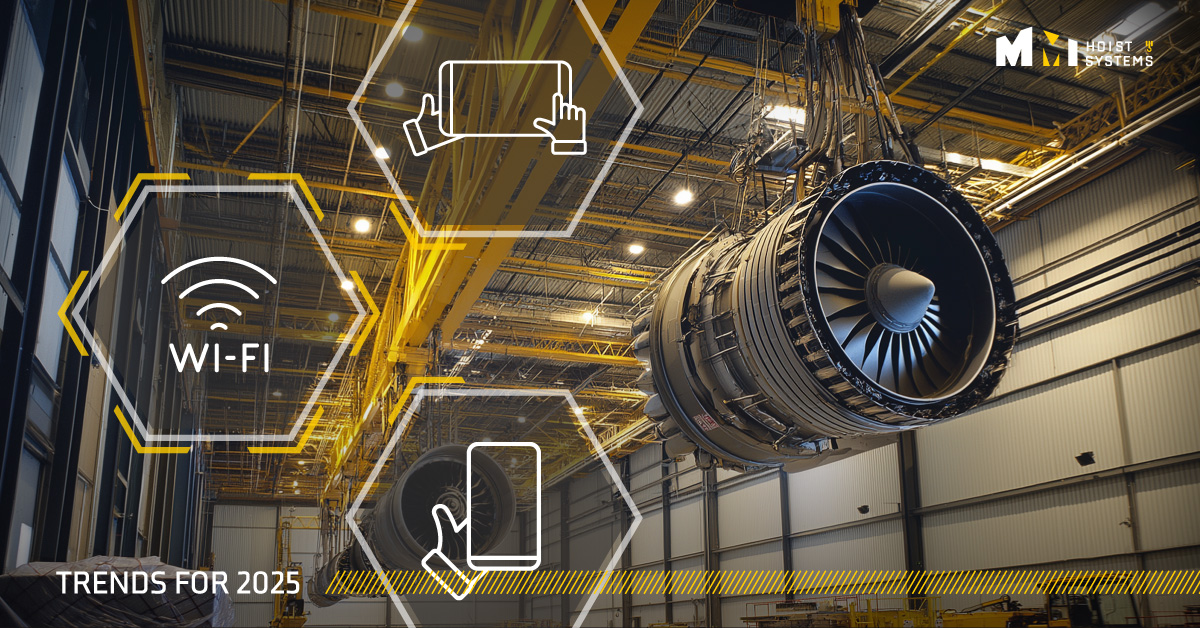At MMI, we know the equipment we use has a direct impact on the results we can deliver. For this reason, we keep a close eye on emerging crane technology. As of 2025, the crane industry is evolving rapidly, driven by technological innovations that make cranes smarter, safer, and more sustainable.
Here is a look at some of the latest trends shaping the future of crane operations, and an exploration of what they might mean for the industrial world as a whole.
Why Cranes Matter
First, it’s important to understand why cranes are important. Cranes have long been a vital part of heavy industry sectors like construction, manufacturing, and logistics. They’re used in virtually every large-scale project from steel fabrication to plant installations and beyond. They can do tasks that would be otherwise impossible for humans—positioning massive beams, machinery, and other components with incredible precision.
In short, cranes boost productivity and improve safety, making them crucial “team members” on every project they’re involved in.
Emerging Crane Trends for 2025 and Beyond
As industry needs evolve, cranes remain essential. But the technology behind the crane needs to keep pace. Recent updates, like the ones listed below, are working to make cranes smarter, cleaner, and more adaptable.
1. Smart Cranes and IoT Integration
Cranes are embracing the Internet of Things (IoT) by becoming connected devices. Many now feature embedded sensors that allow for:
- Real-time monitoring, tracking crane health
- Predictive maintenance, anticipating potential failures and scheduling proactive maintenance
- Optimized operations, identifying ideal lifting paths and addressing operational setbacks
This all adds up to enhanced operational efficiency, with reduced downtime and repair costs.
2. Automation and Remote Operation
Fully or semi-automated cranes are becoming more common, especially in hazardous environments. Remote-controlled systems reduce human intervention, which improves safety and precision.
3. Energy Efficiency and Sustainability
More and more focus is being placed on how to make cranes more sustainable. Electric and hybrid cranes, with energy-saving technologies like regenerative braking, are increasingly popular. Some cranes are even made with recyclable materials, or lightweight (but strong) materials that help reduce energy consumption.
Eco-friendly features like these help to lower environmental impact and long-term operational costs.
4. Advanced Safety Features
Modern cranes include the latest safety features, like anti-collision systems and VR training modules. These tools make crane operations safer for workers, most notably in tight or complex jobsite environments.
5. Modular Design and Customization
“One size fits all” is not acceptable for many of today’s projects. The latest crane models are modular, allowing them to be tailored to specific site needs. Other features, like wireless software upgrades, further bring cranes into the modern world.
What These Trends Mean for the Industry
These shifts in crane design and function have widespread implications, including:
- Greater Efficiency: Automated processes and predictive analytics reduce delays and downtime, helping to keep projects on schedule.
- Improved Safety: Better training tools and advanced features help minimize accidents, protecting workers and equipment.
- Lower Costs: Energy-saving technology and less downtime help reduce long-term expenses.
- Environmental Benefits: Eco-friendly designs, with reduced emissions and cleaner energy options, support sustainability goals.
- Scalable Growth: Modular solutions allow adaptability, so operations can be scaled as business needs change.
Looking Ahead with MMI
At MMI, we rely on the latest crane technology to deliver safe, precise, efficient results. As trends continue to develop, we will be at the forefront of the evolution, leveraging advanced equipment to meet the growing demands of our industry.
Contact MMI Hoist Systems to learn more about our crane fabrication, installation and certification services and how we’re integrating technology to raise the whole industry higher.
